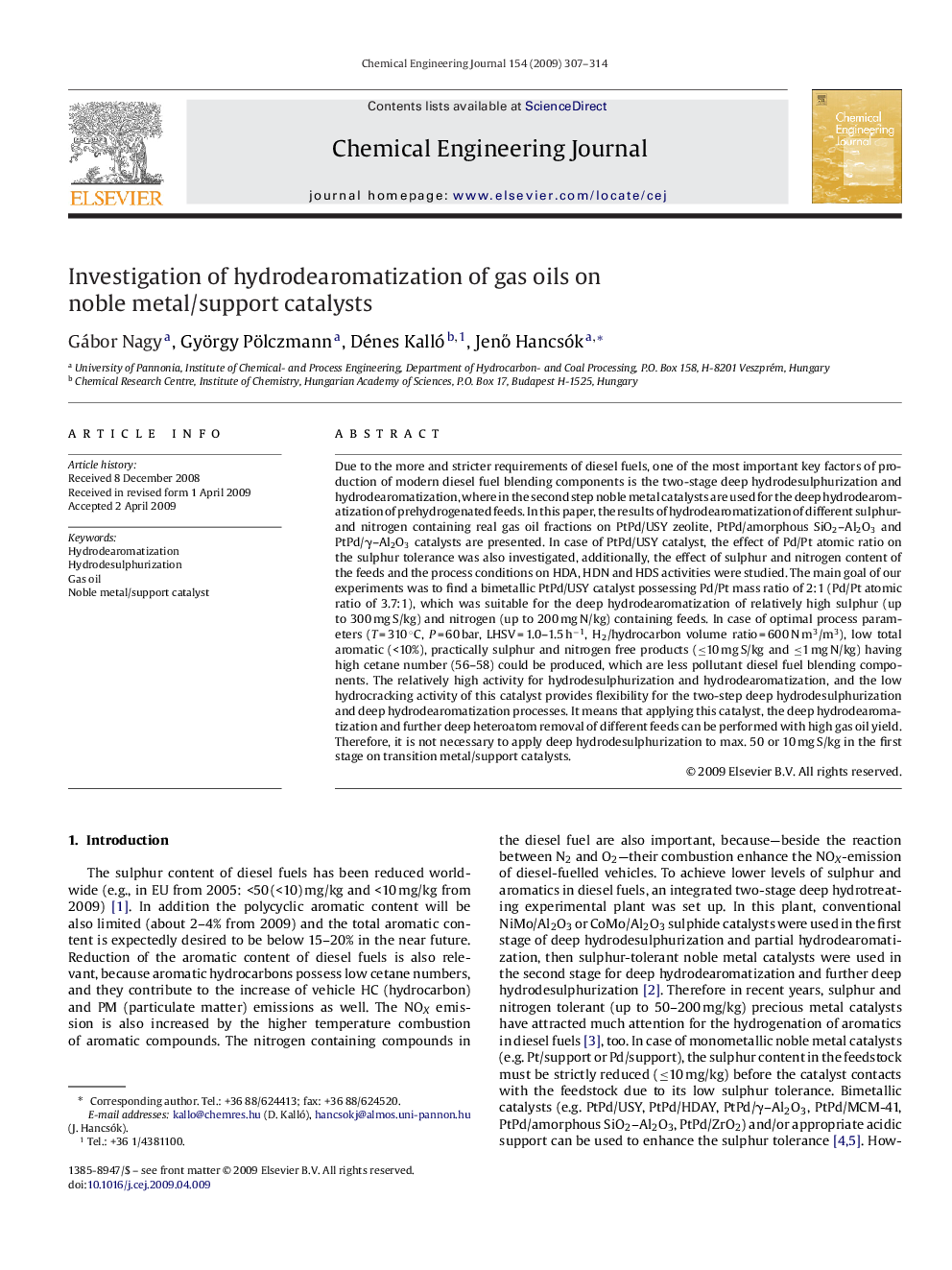| کد مقاله | کد نشریه | سال انتشار | مقاله انگلیسی | نسخه تمام متن |
|---|---|---|---|---|
| 153553 | 456531 | 2009 | 8 صفحه PDF | دانلود رایگان |

Due to the more and stricter requirements of diesel fuels, one of the most important key factors of production of modern diesel fuel blending components is the two-stage deep hydrodesulphurization and hydrodearomatization, where in the second step noble metal catalysts are used for the deep hydrodearomatization of prehydrogenated feeds. In this paper, the results of hydrodearomatization of different sulphur- and nitrogen containing real gas oil fractions on PtPd/USY zeolite, PtPd/amorphous SiO2–Al2O3 and PtPd/γ–Al2O3 catalysts are presented. In case of PtPd/USY catalyst, the effect of Pd/Pt atomic ratio on the sulphur tolerance was also investigated, additionally, the effect of sulphur and nitrogen content of the feeds and the process conditions on HDA, HDN and HDS activities were studied. The main goal of our experiments was to find a bimetallic PtPd/USY catalyst possessing Pd/Pt mass ratio of 2:1 (Pd/Pt atomic ratio of 3.7:1), which was suitable for the deep hydrodearomatization of relatively high sulphur (up to 300 mg S/kg) and nitrogen (up to 200 mg N/kg) containing feeds. In case of optimal process parameters (T = 310 °C, P = 60 bar, LHSV = 1.0–1.5 h−1, H2/hydrocarbon volume ratio = 600 N m3/m3), low total aromatic (<10%), practically sulphur and nitrogen free products (≤10 mg S/kg and ≤1 mg N/kg) having high cetane number (56–58) could be produced, which are less pollutant diesel fuel blending components. The relatively high activity for hydrodesulphurization and hydrodearomatization, and the low hydrocracking activity of this catalyst provides flexibility for the two-step deep hydrodesulphurization and deep hydrodearomatization processes. It means that applying this catalyst, the deep hydrodearomatization and further deep heteroatom removal of different feeds can be performed with high gas oil yield. Therefore, it is not necessary to apply deep hydrodesulphurization to max. 50 or 10 mg S/kg in the first stage on transition metal/support catalysts.
Journal: Chemical Engineering Journal - Volume 154, Issues 1–3, 15 November 2009, Pages 307–314